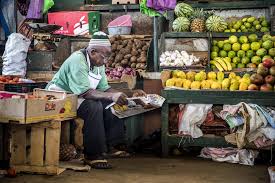Kenya’s annual inflation rate dropped to 3.8% in May 2025, down from 4.1% recorded in April, according to fresh data released by the Kenya National Bureau of Statistics (KNBS) on Friday. The decline means the country’s inflation is still well within the Central Bank of Kenya (CBK)’s official target range of 2.5% to 7.5%.
The new figures show that Kenya’s economy is maintaining some level of stability, especially when it comes to prices of essential goods and services. The inflation rate is a key indicator of the cost of living in any country, and a lower rate generally means that prices are not rising too fast, giving relief to ordinary citizens.
On a month-to-month basis, the inflation rate rose slightly by 0.5% in May compared to 0.3% in April. This means that while the overall yearly increase in prices is slowing down, there was a small rise in prices between April and May. Such changes are often influenced by seasonal shifts in food supply, fuel costs, and other factors.
The KNBS statement further revealed that the Food and Non-Alcoholic Beverages Index went up by 6.3% compared to the same period last year. This means that while general inflation is coming down, food prices are still climbing, likely affecting many low-income households. Items such as vegetables, fruits, maize flour, and other basic foods have become more expensive compared to May 2024.
In the same period, the Transport Index rose by 2.3%, which suggests a moderate increase in the cost of travel and transportation. Factors like fuel prices, public transport fares, and vehicle maintenance costs may have contributed to this increase.
Economic analysts in Kenya say the decline in annual inflation is a good sign, especially for an economy that is still dealing with the aftershocks of global inflation trends, high fuel prices, and currency depreciation over the past few years. Lower inflation is also good news for businesses and investors because it brings more predictability in terms of planning and costs.
Despite the slight month-to-month increase in prices, the Central Bank of Kenya (CBK) is expected to stay on track with its goal of supporting economic growth. The bank is scheduled to make its next monetary policy announcement on June 10, and all eyes will be on whether it will maintain, cut, or increase interest rates.
In a surprising move in April, the CBK reduced its policy interest rate to 10.0%—marking the fifth consecutive cut. The decision was aimed at encouraging more lending to the private sector, especially small and medium-sized enterprises (SMEs), which are seen as key drivers of employment and economic growth.
The central bank’s decision to ease rates came at a time when inflation was already under control, which gave it room to stimulate the economy without the fear of pushing prices too high. Many financial experts say this was a bold but calculated move, showing the bank’s confidence in the country’s macroeconomic stability.
Looking ahead, the June policy meeting will be crucial. It will offer more insight into how the central bank views the balance between growth and inflation. If inflation continues to fall, the CBK might consider another rate cut, although some economists believe it may hold steady to observe the impact of previous adjustments.
Kenya’s government is also expected to continue implementing policies aimed at lowering the cost of living. Measures such as supporting agriculture, improving infrastructure, and stabilising fuel prices are likely to play a role in managing inflation in the coming months.
The drop in inflation is a positive sign for consumers, businesses, and investors in Kenya. However, rising food and transport costs remain key concerns, and stakeholders will be watching how the government and central bank respond.
